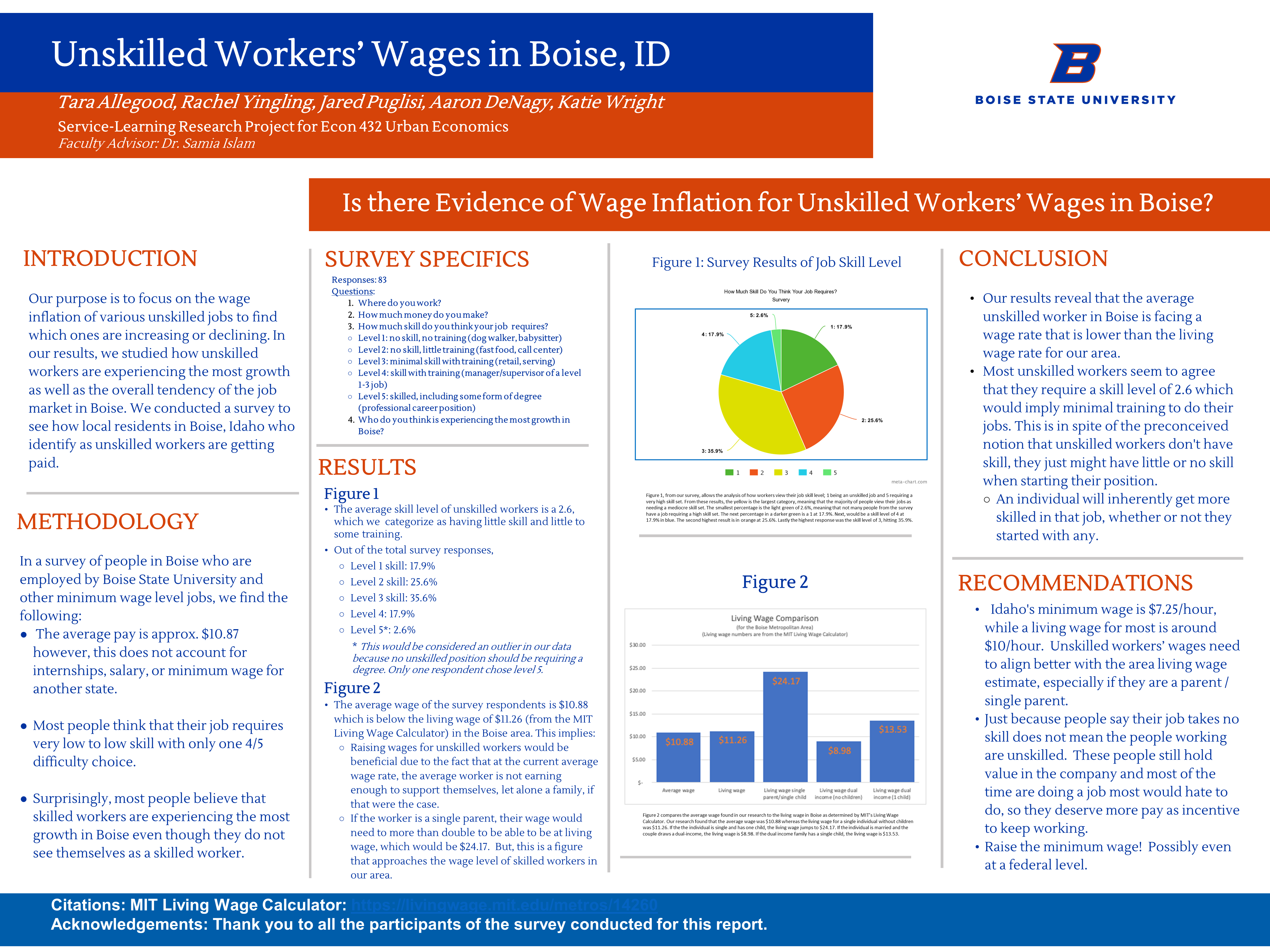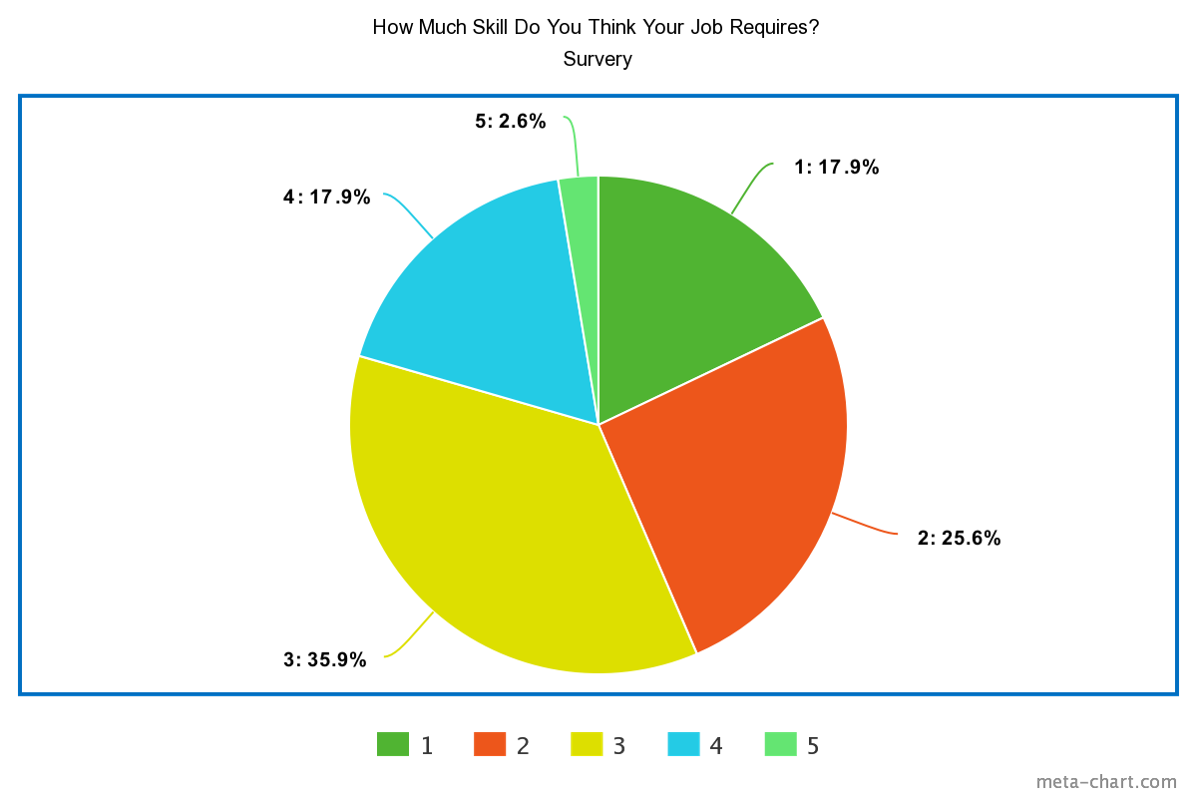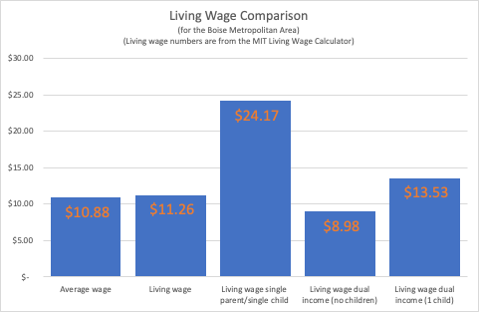Is there Evidence of Wage Inflation for Unskilled Workers’ Wages in Boise?
Tara Allegood, Rachel Yingling, Jared Puglisi, Aaron DeNagy, Katie Wright, Dr. Samia Islam

Introduction
Our purpose is to focus on the wage inflation of various unskilled jobs to find which ones are increasing or declining. In our results, we studied how unskilled workers are experiencing the most growth as well as the overall tendency of the job market in Boise. We conducted a survey to see how local residents in Boise, Idaho who identify as unskilled workers are getting paid.
Methodology
In a survey of people in Boise who are employed by Boise State University and other minimum wage level jobs, we find the following:
- The average pay is approx. $10.87 however, this does not account for internships, salary, or minimum wage for another state.
- Most people think that their job requires very low to low skill with only one 4/5 difficulty choice.
- Surprisingly, most people believe that skilled workers are experiencing the most growth in Boise even though they do not see themselves as a skilled worker.
Survey Specifics
Responses: 83
Questions
1. Where do you work?
2. How much money do you make?
3. How much skill do you think your job requires?
- Level 1: no skill, no training (dog walker, babysitter)
- Level 2: no skill, little training (fast food, call center)
- Level 3: minimal skill with training (retail, serving)
- Level 4: skill with training (manager/supervisor of a level 1-3 job)
- Level 5: skilled, including some form of degree (professional career position)
4. Who do you think is experiencing the most growth in Boise?
Results
Figure 1: Survey Results of Job Skill Level

The average skill level of unskilled workers is a 2.6, which we categorize as having little skill and little to some training.
Out of the total survey responses,
- Level 1 skill: 17.9%
- Level 2 skill: 25.6%
- Level 3 skill: 35.6%
- Level 4: 17.9%
- Level 5*: 2.6%
* This would be considered an outlier in our data because no unskilled position should be requiring a degree. Only one respondent chose level 5.
Figure 2: Living Wage Comparison

The average wage of the survey respondents is $10.88 which is below the living wage of $11.26 (from the MIT Living Wage Calculator) in the Boise area. This implies:
- Raising wages for unskilled workers would be beneficial due to the fact that at the current average wage rate, the average worker is not earning enough to support themselves, let alone a family, if that were the case.
- If the worker is a single parent, their wage would need to more than double to be able to be at living wage, which would be $24.17. But, this is a figure that approaches the wage level of skilled workers in our area.
Conclusion
Our results reveal that the average unskilled worker in Boise is facing a wage rate that is lower than the living wage rate for our area.
Most unskilled workers seem to agree that they require a skill level of 2.6 which would imply minimal training to do their jobs. This is in spite of the preconceived notion that unskilled workers don’t have skill, they just might have little or no skill when starting their position.
An individual will inherently get more skilled in that job, whether or not they started with any.
Recommendations
- Idaho’s minimum wage is $7.25/hour, while a living wage for most is around $10/hour. Unskilled workers’ wages need to align better with the area living wage estimate, especially if they are a parent / single parent.
- Just because people say their job takes no skill does not mean the people working are unskilled. These people still hold value in the company and most of the time are doing a job most would hate to do, so they deserve more pay as incentive to keep working.
- Raise the minimum wage! Possibly even at a federal level.
Citations and Aknowledgements
- Citations: MIT Living Wage Calculator
- Acknowledgements: Thank you to all the participants of the survey conducted for this report.
Additional Information
For questions or comments about this research, contact Katie Wright at katiewright795@u.boisestate.edu.